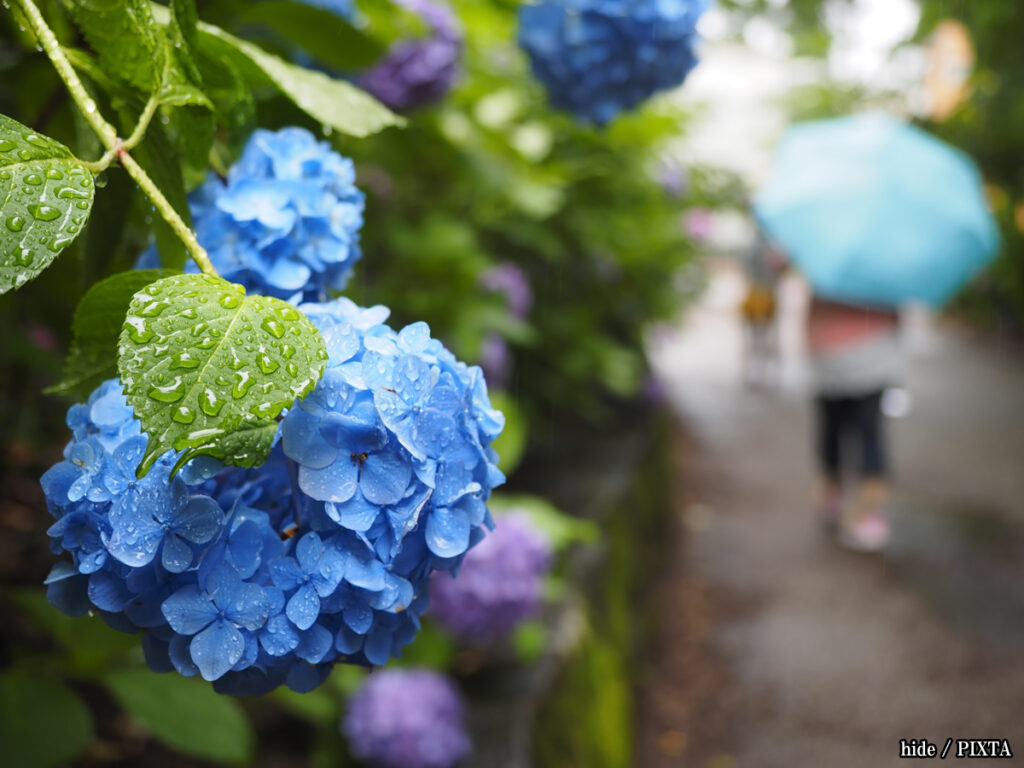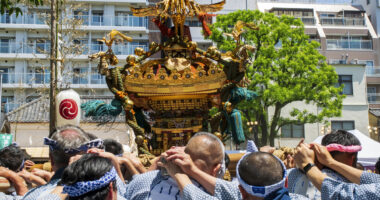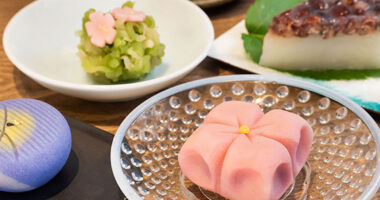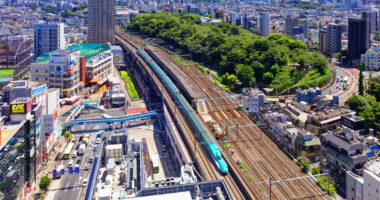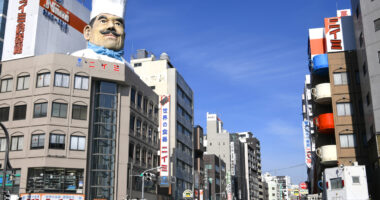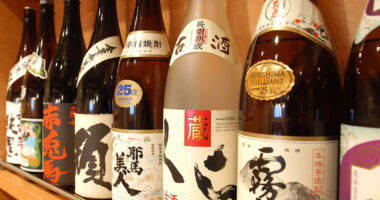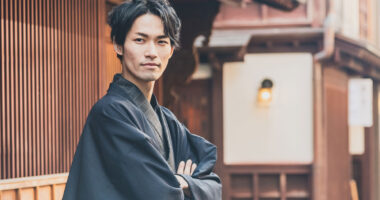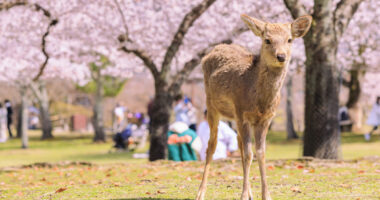As cherry blossoms fade and summer’s heat has yet to arrive, most parts of Japan enter the rainy season, known as tsuyu. While many travelers avoid this time of year, those in search of a more affordable and less crowded experience often discover a uniquely atmospheric side of the country. From misty temple gardens to softly lit city streets, tsuyu offers a different—yet equally enchanting—perspective on Japan.
What is tsuyu? Japan’s rainy season
Tsuyu, literally meaning “plum rain” in Japanese, typically arrives in early June and lingers through mid-July across most of Japan. This seasonal phenomenon occurs when warm, humid air from the Pacific collides with cooler continental air, resulting in steady rainfall. Over the course of roughly six weeks, you can expect anything from light drizzles to heavy downpours, interspersed with bursts of sunshine and thick humidity.
Unlike the intense typhoons of late summer or the heavy snows of winter, tsuyu brings a gentler, more poetic kind of weather. The rain softens the landscape into vivid shades of green, as moss flourishes and ajisai (hydrangeas) bloom in spectacular clusters throughout the country.
Benefits of off-season travel in Japan
Fewer crowds, more authentic experiences
While the number of visitors to Japan remains high year-round, the rainy season tends to see slightly fewer crowds at major tourist sites compared to peak months like March or January. This makes it easier to enjoy popular spots at a more relaxed pace. Destinations that are packed during cherry blossom season or autumn foliage season become quiet and inviting during tsuyu. Without the usual flow of visitors, you can explore temples, shrines, gardens, and museums at a leisurely pace, taking the time to absorb the atmosphere and significance fully.
Budget-friendly accommodations and attractions
For cost-conscious travelers, the rainy season can offer more affordable options. Many hotels and ryokan (traditional Japanese inns) tend to have greater availability during this period, making it easier to find good deals compared to peak travel seasons. In major destinations like Tokyo and Kyoto, some attractions may introduce rainy-day discounts or seasonal promotions during tsuyu, making budget travel more feasible.
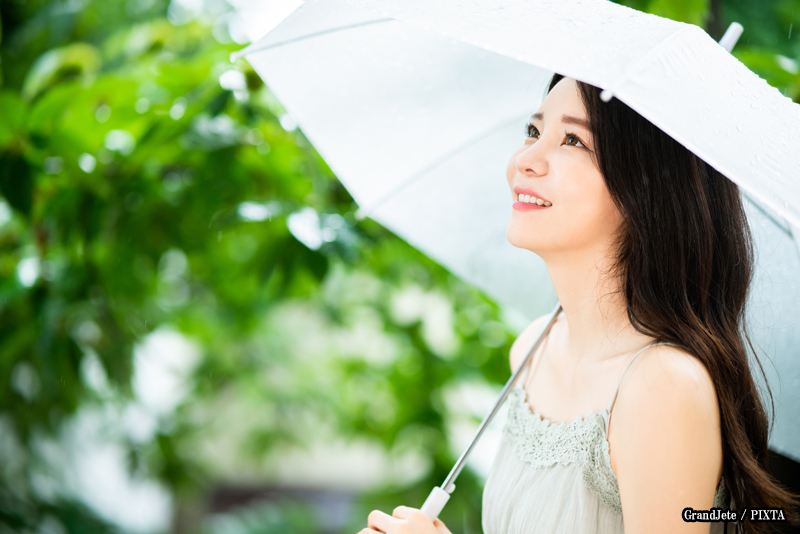
Photo for illustrative purposes
Unique rainy season experiences
Misty temples and lush gardens
Japan’s temples, shrines, and gardens take on an almost otherworldly quality during tsuyu. Historic sites like Kyoto’s Kiyomizu-dera Temple gracefully emerge from the morning mist, evoking scenes straight out of a traditional ink painting. Gentle rain deepens the colors of moss gardens at places like Kokedera (Moss Temple), also in Kyoto, where over 120 varieties of moss create vibrant carpets of green.
Famous gardens such as Kenrokuen in Kanazawa (Ishikawa Prefecture) or Koishikawa Korakuen in Tokyo reveal their rainy season charm in subtler ways, as raindrops balance on maple leaves and reflective ponds mirror the soft gray sky. For photographers, it’s a season of saturated colors and fleeting, atmospheric light that’s difficult to capture at any other time of year.
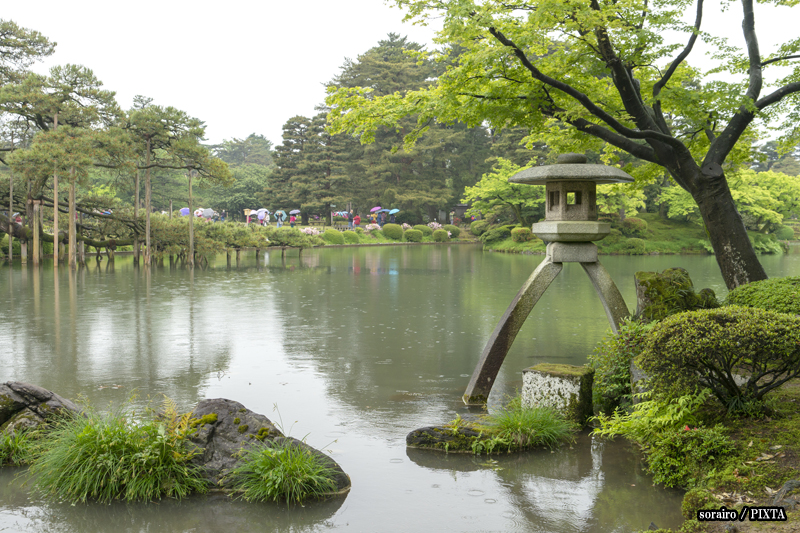
Photo for illustrative purposes
Related article: “What to Do in Japan During the Rainy Season: Indoor and Nature-Friendly Ideas“
Regional rainy season highlights
The rainy season casts the sprawling metropolis of Tokyo in a quieter, introspective light. Landmarks like the Tokyo Skytree and Tokyo Tower rising through low clouds create striking silhouettes, while the city’s many museums and galleries provide the perfect shelter on wetter days.
In rural Japan, tsuyu brings rice fields to life with fresh new growth, forming intricate patterns that stretch across the countryside. Areas like Hakone offer mist-covered lake views, and, if you’re lucky, you might catch a rare glimpse of Mt. Fuji breaking through the clouds. Further south, the islands of Okinawa showcase their tropical charm with brief, warm bursts of rain and incredible greenery.
Related article: “When Is the Rainy Season in Japan? A Month-by-Month Regional Breakdown“
Practical tips for tsuyu travel
Perfect activities for rainy days
While some outdoor activities might need adjusting, many experiences are even better in the rain:
- Visit museums and galleries without the usual crowds
- Take part in a Japanese tea ceremony accompanied by the light sounds of rainfall
- Enjoy leisurely meals at restaurants that usually have long waits
- Soak in an onsen (hot spring bath) while listening to the soothing soundtrack of the rain
- Browse covered shopping streets like Tokyo’s Shin Nakamise Shopping Street or Kyoto’s Nishiki Market
Slow moments, deeper impressions
Japan’s rainy season invites you to slow down. Locals linger in cafes, explore bookstores, or enjoy quiet walks under umbrellas. As a traveler, this slower pace opens up moments you might miss in peak season—like sipping tea in a kissaten (traditional Japanese coffee shop), listening to raindrops in a garden, or chatting with a shop owner when the street is calm. Tsuyu isn’t just about rain—it’s about reflection, rhythm, and finding beauty in everyday life.
Embracing the contemplative side of Japan
Traveling during the rainy season offers a rare chance to see tsuyu as many locals do—a time of renewal, subtle beauty, and peaceful reflection. The Japanese concept of mono no aware—the bittersweet appreciation of life’s impermanence—feels especially fitting during tsuyu, when brief sunbreaks give way to fleeting moments of extraordinary beauty amid the rain.
For travelers looking to embrace a slower pace and different perspective, the rainy season rewards with significant savings, meaningful encounters, and lasting memories of a Japan that few seasonal tourists ever get to see.
